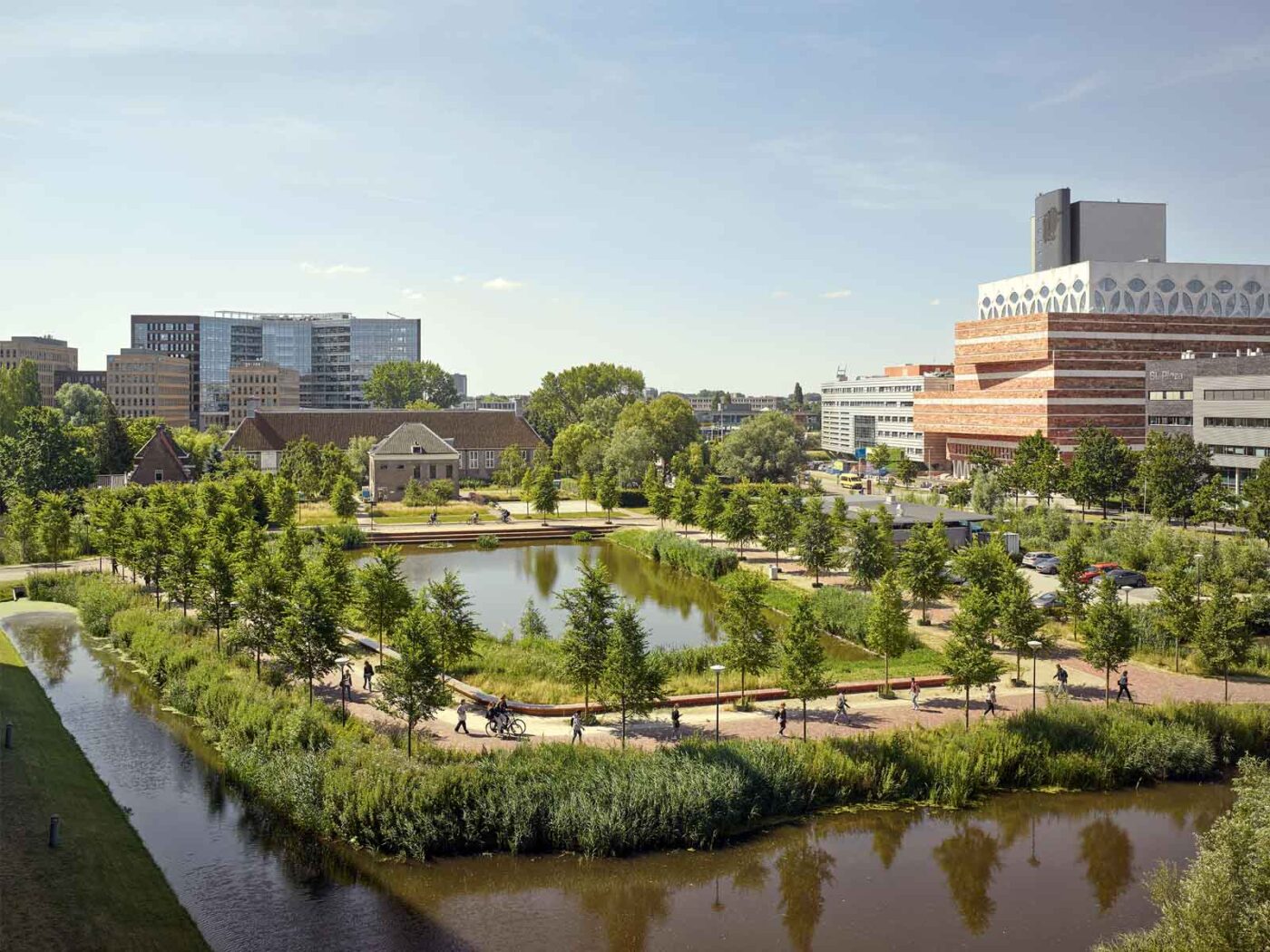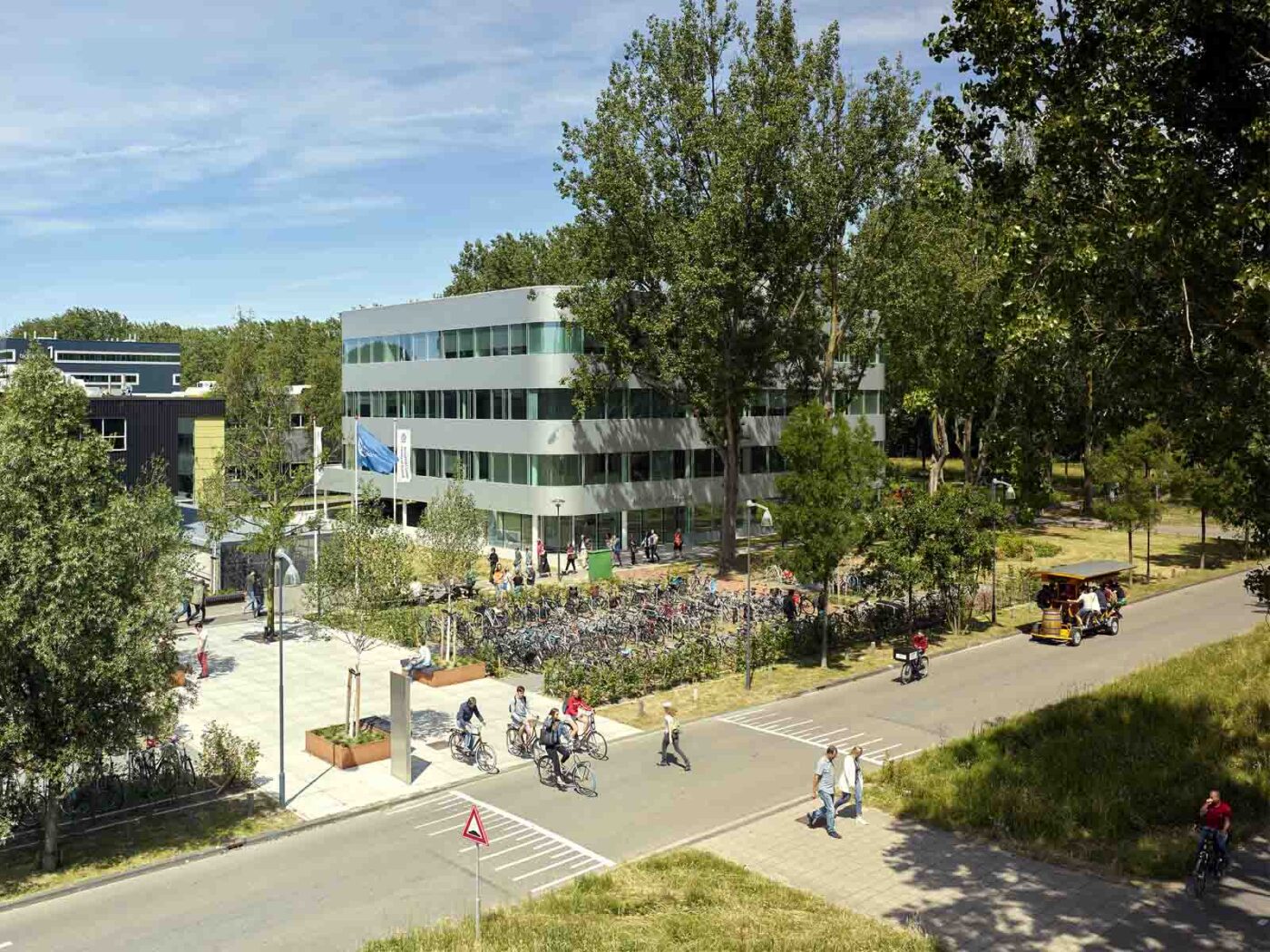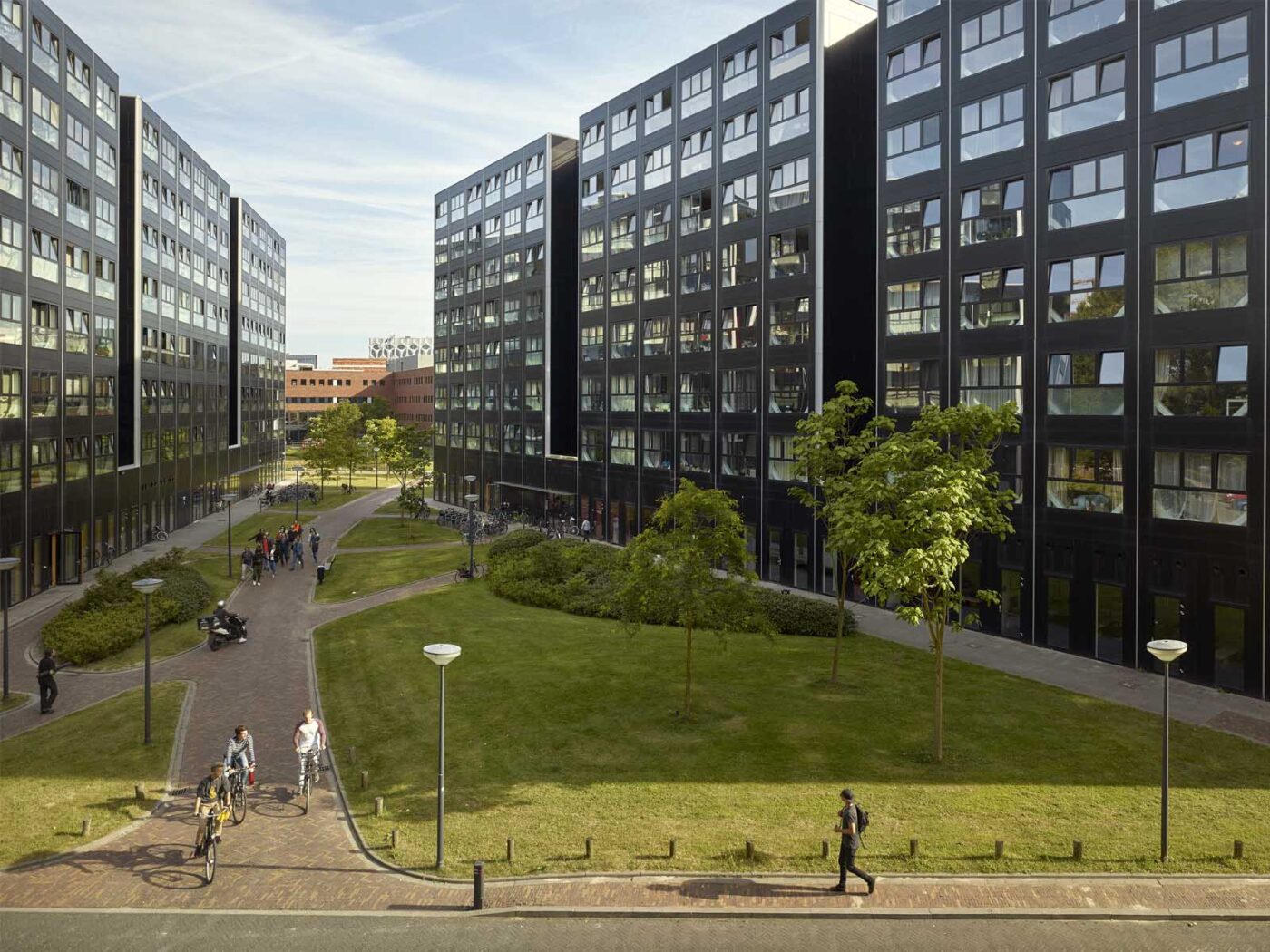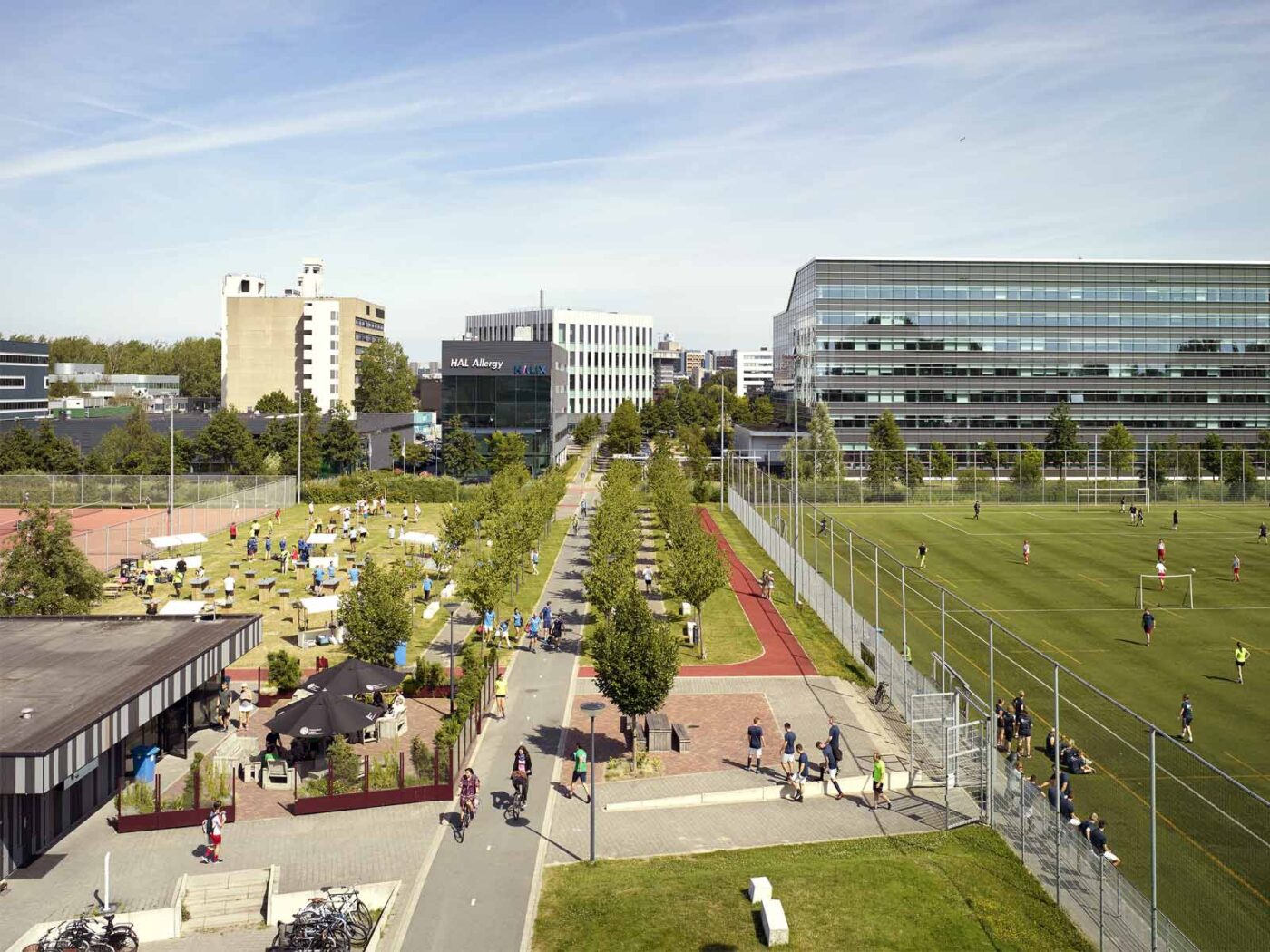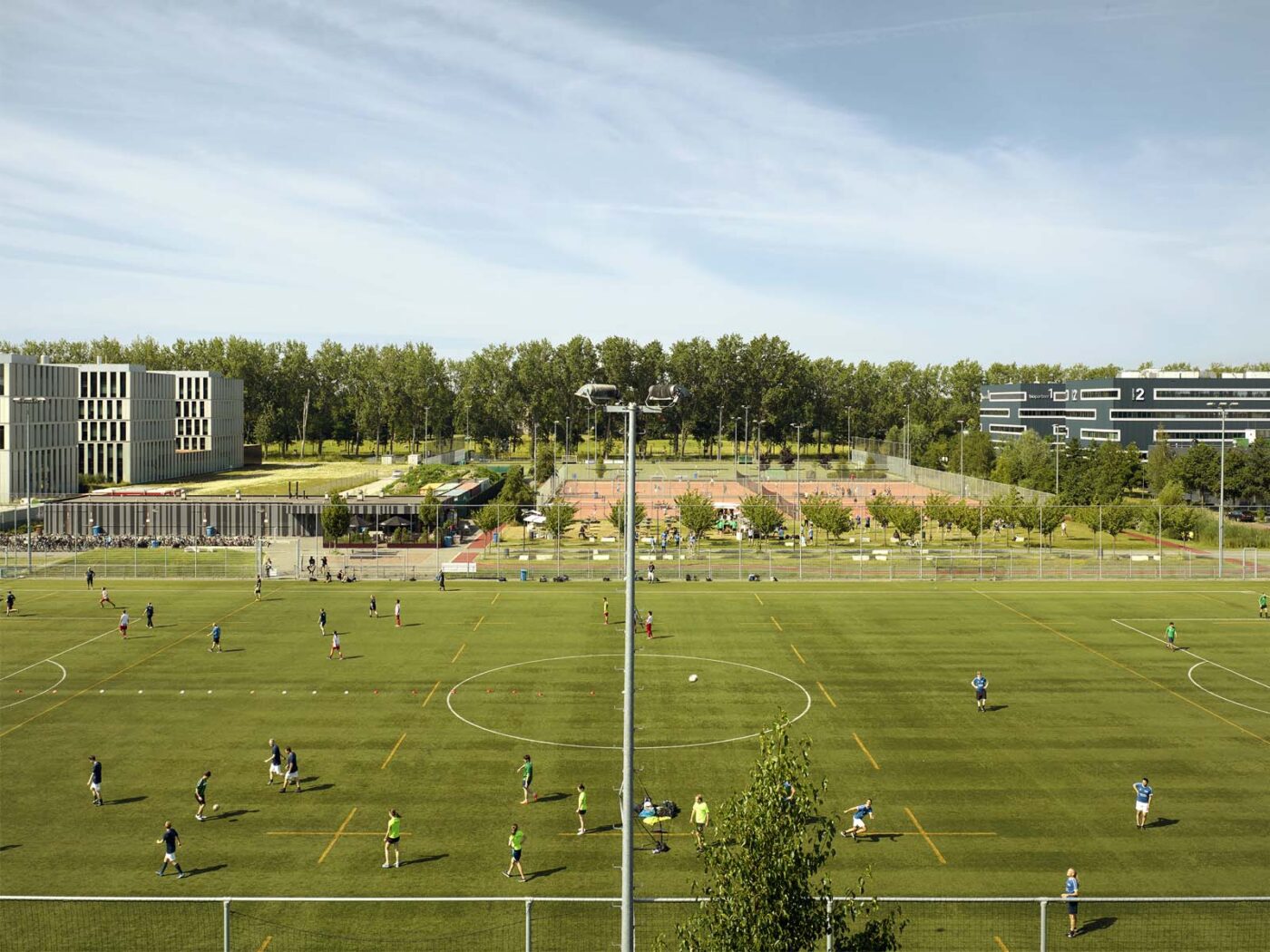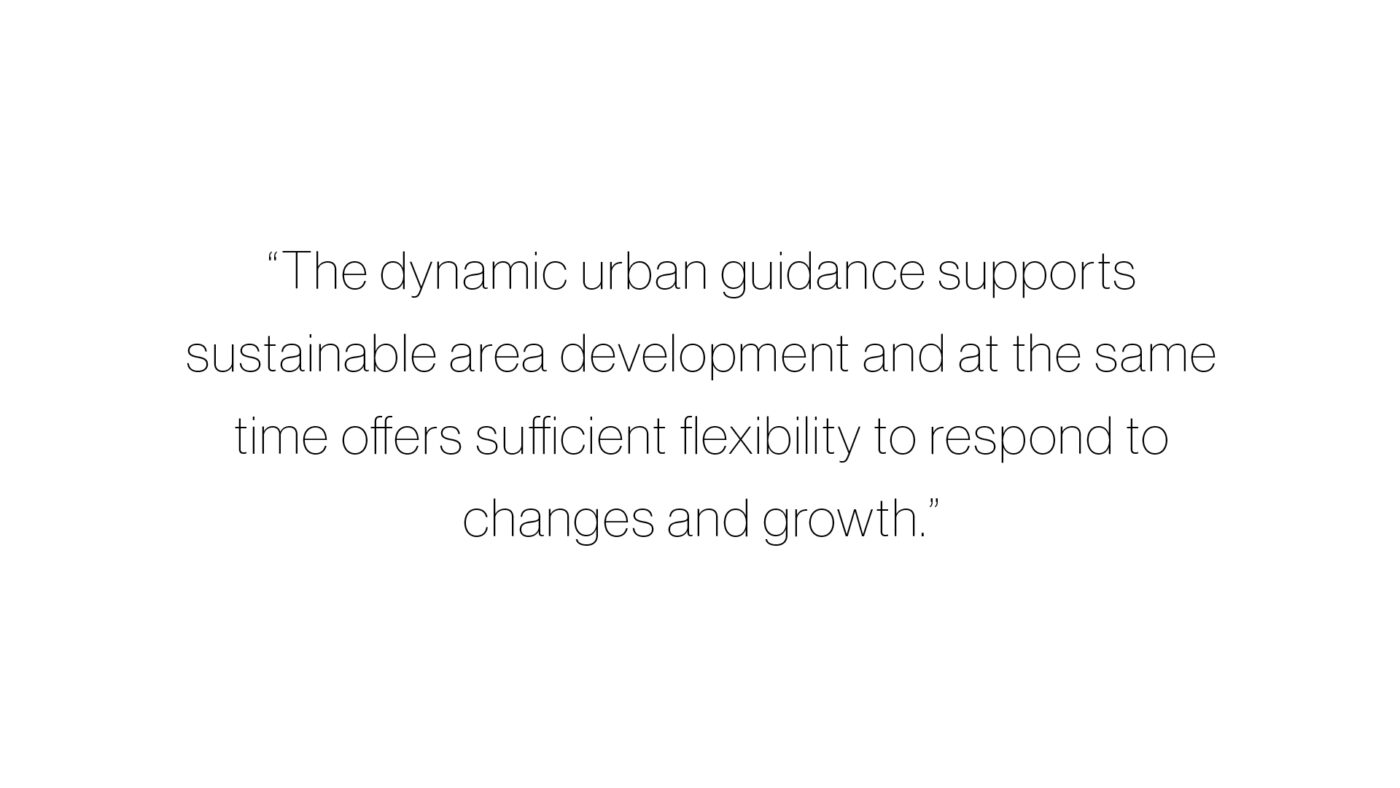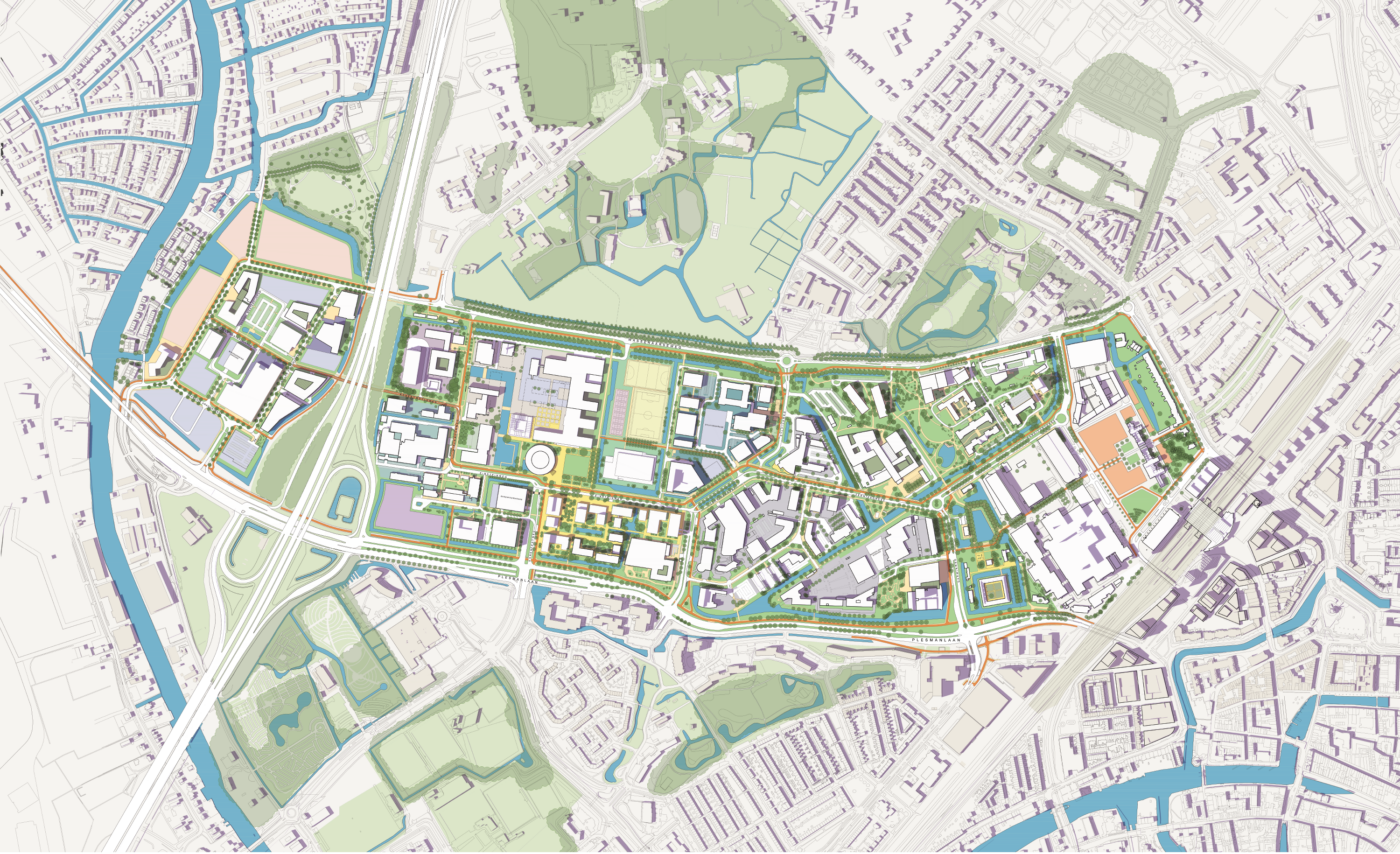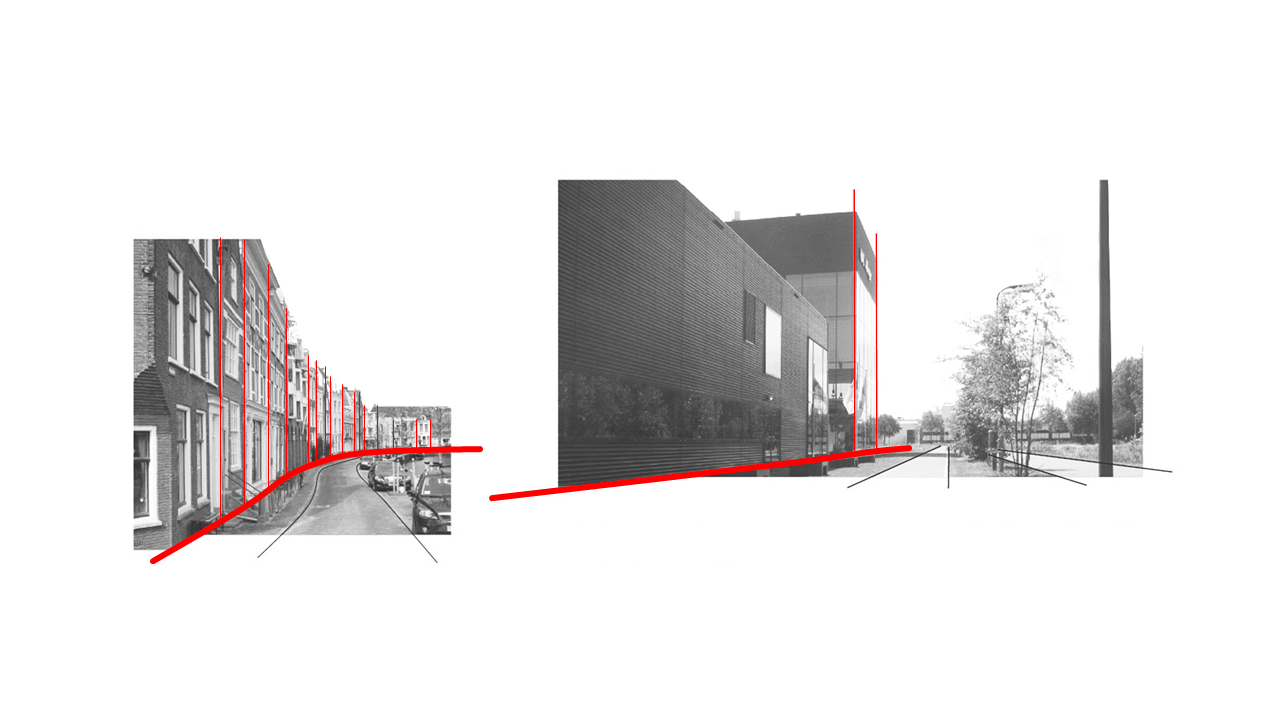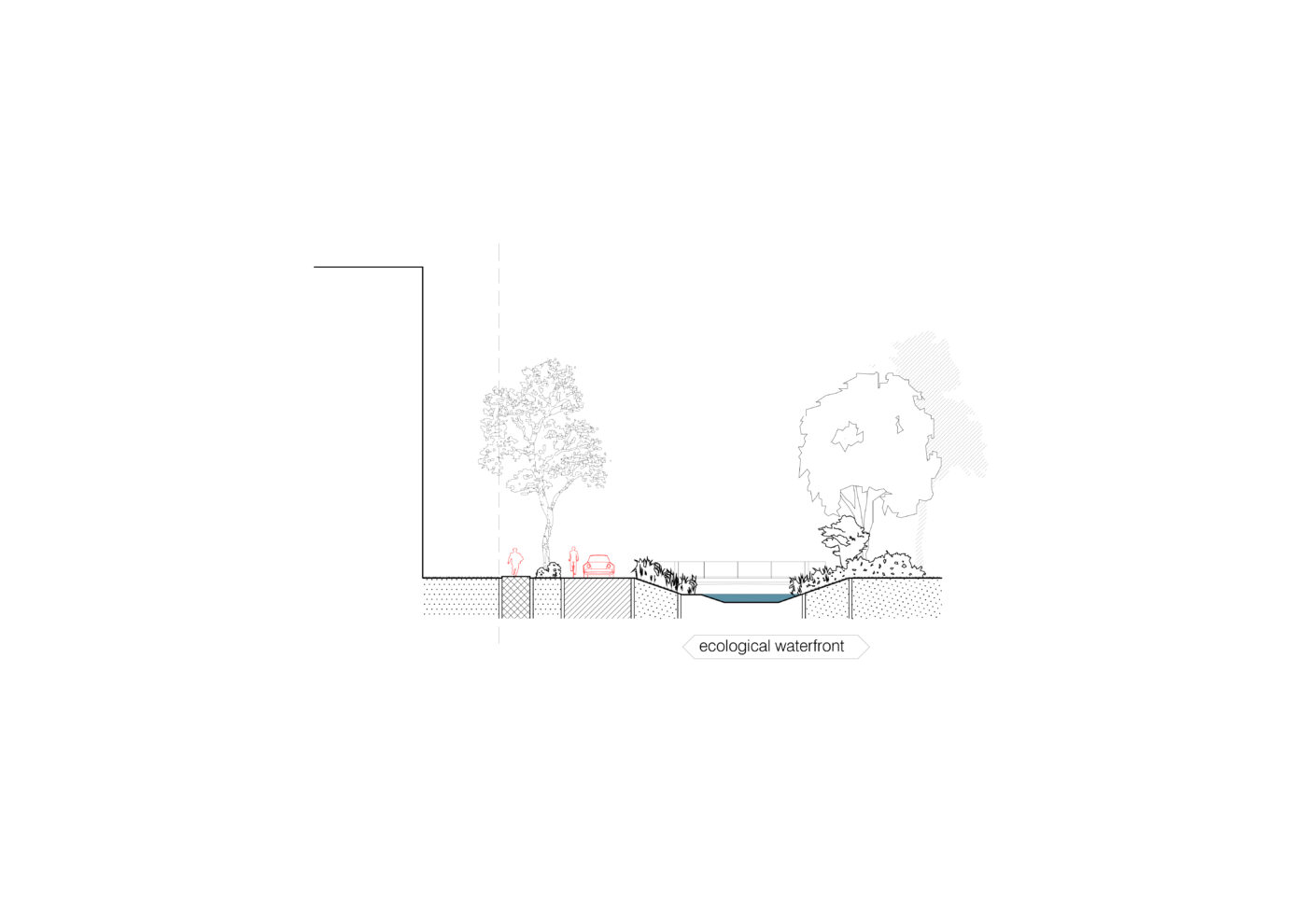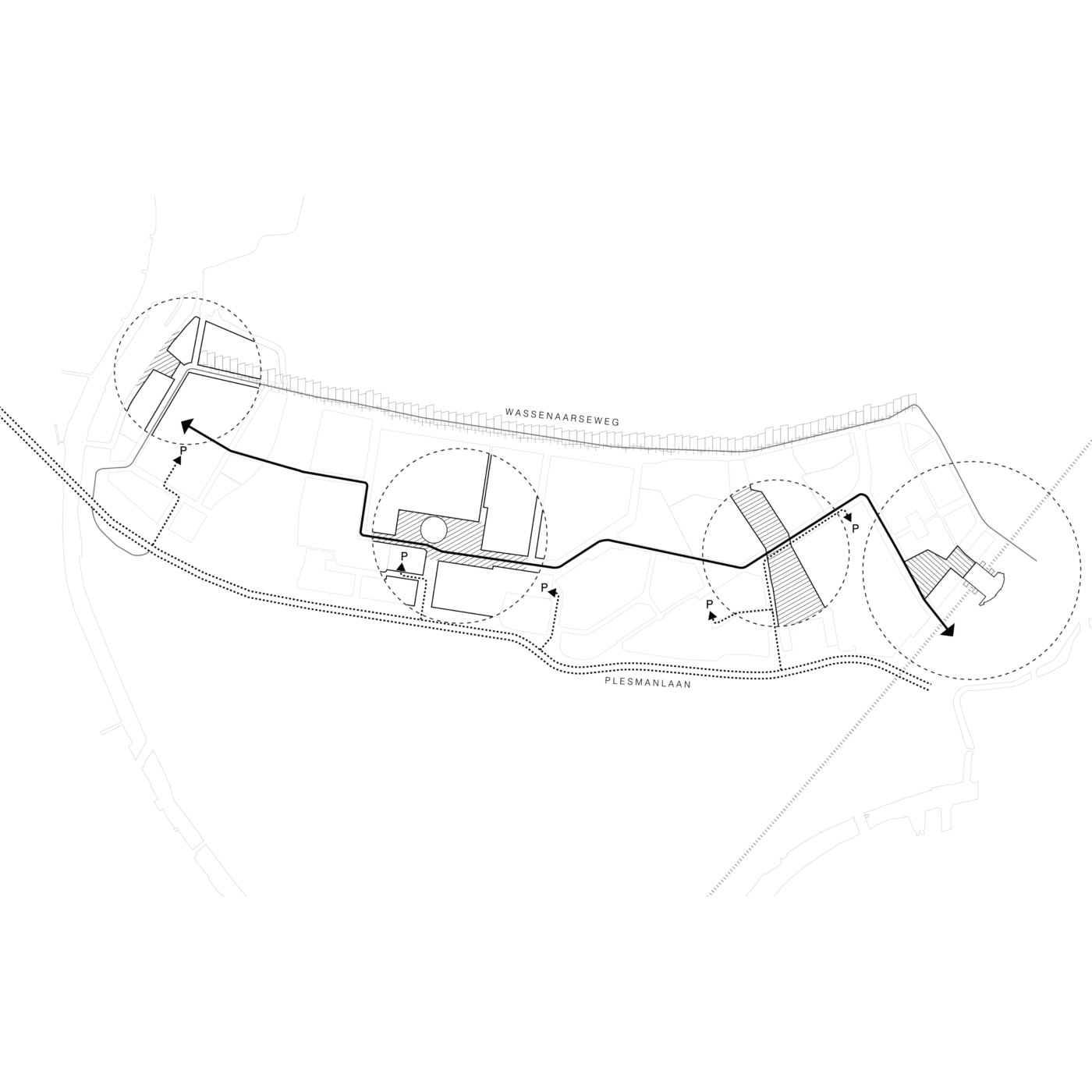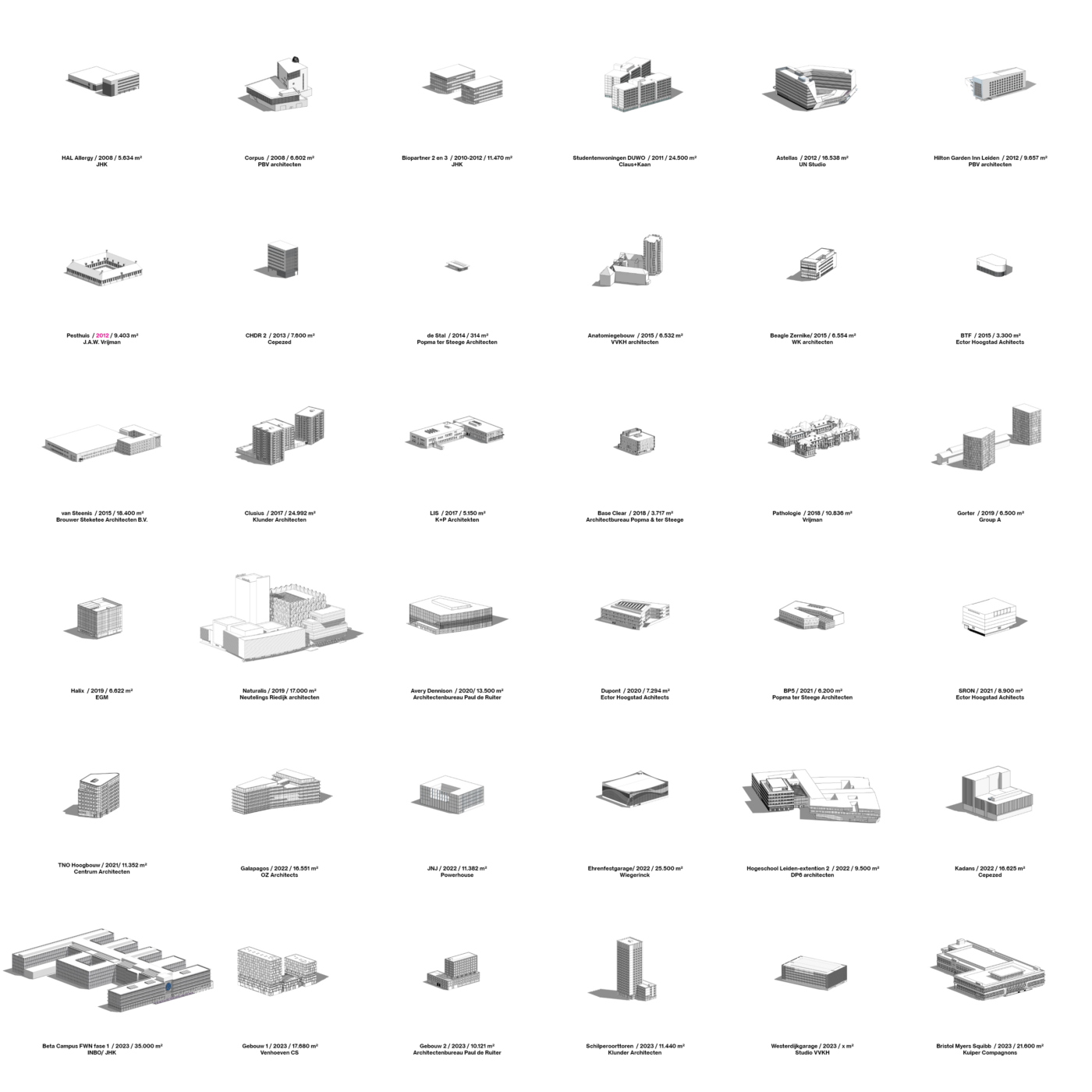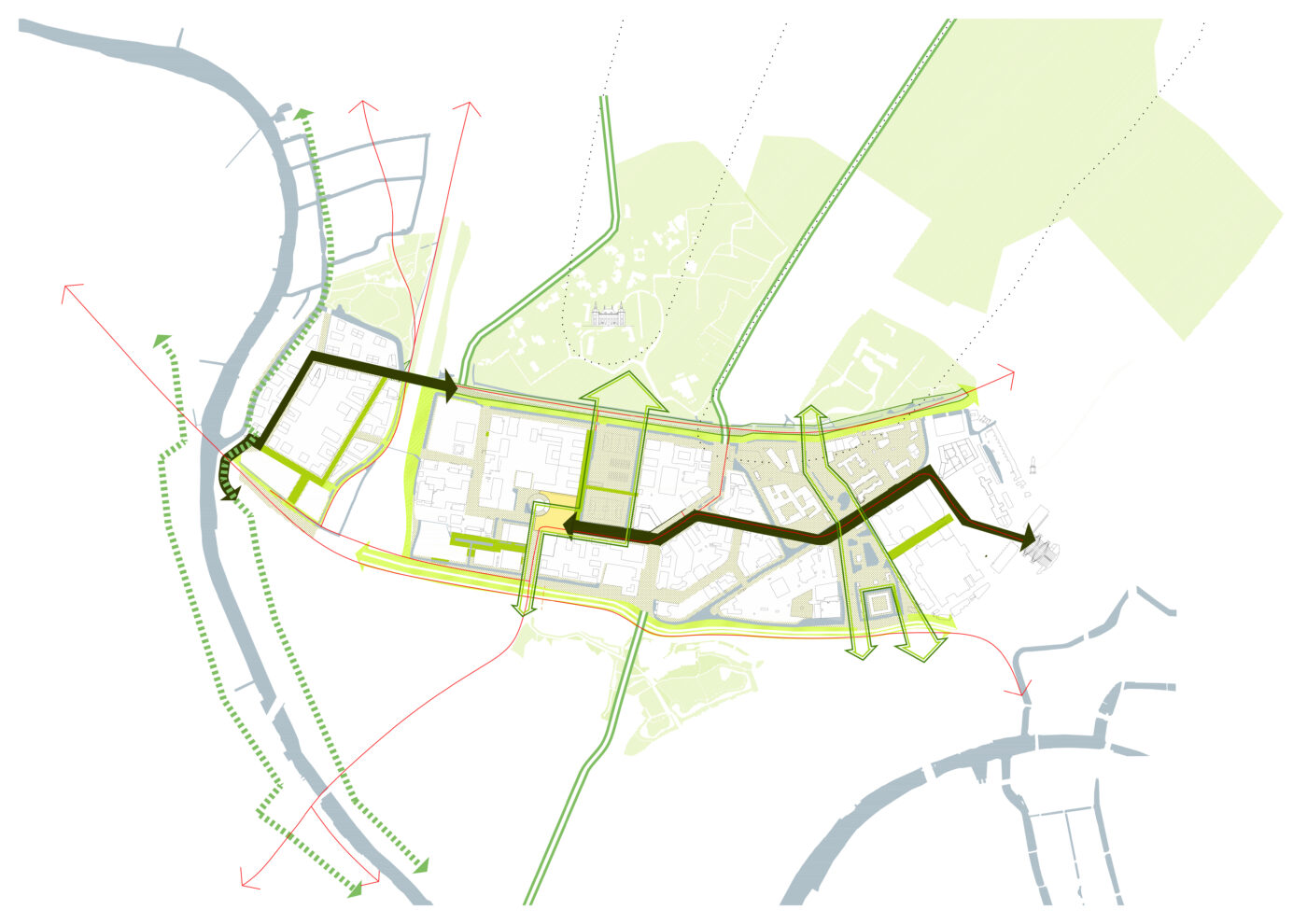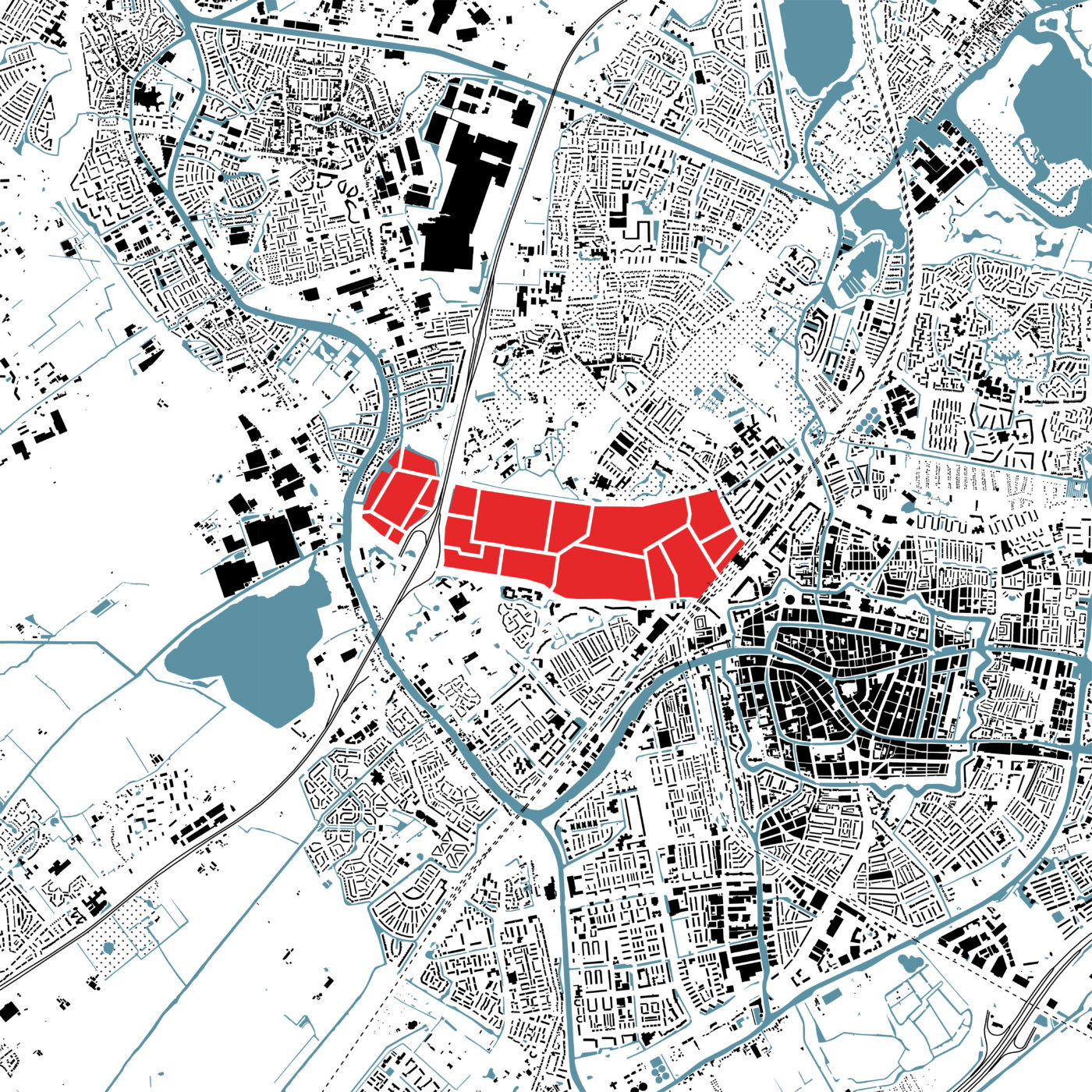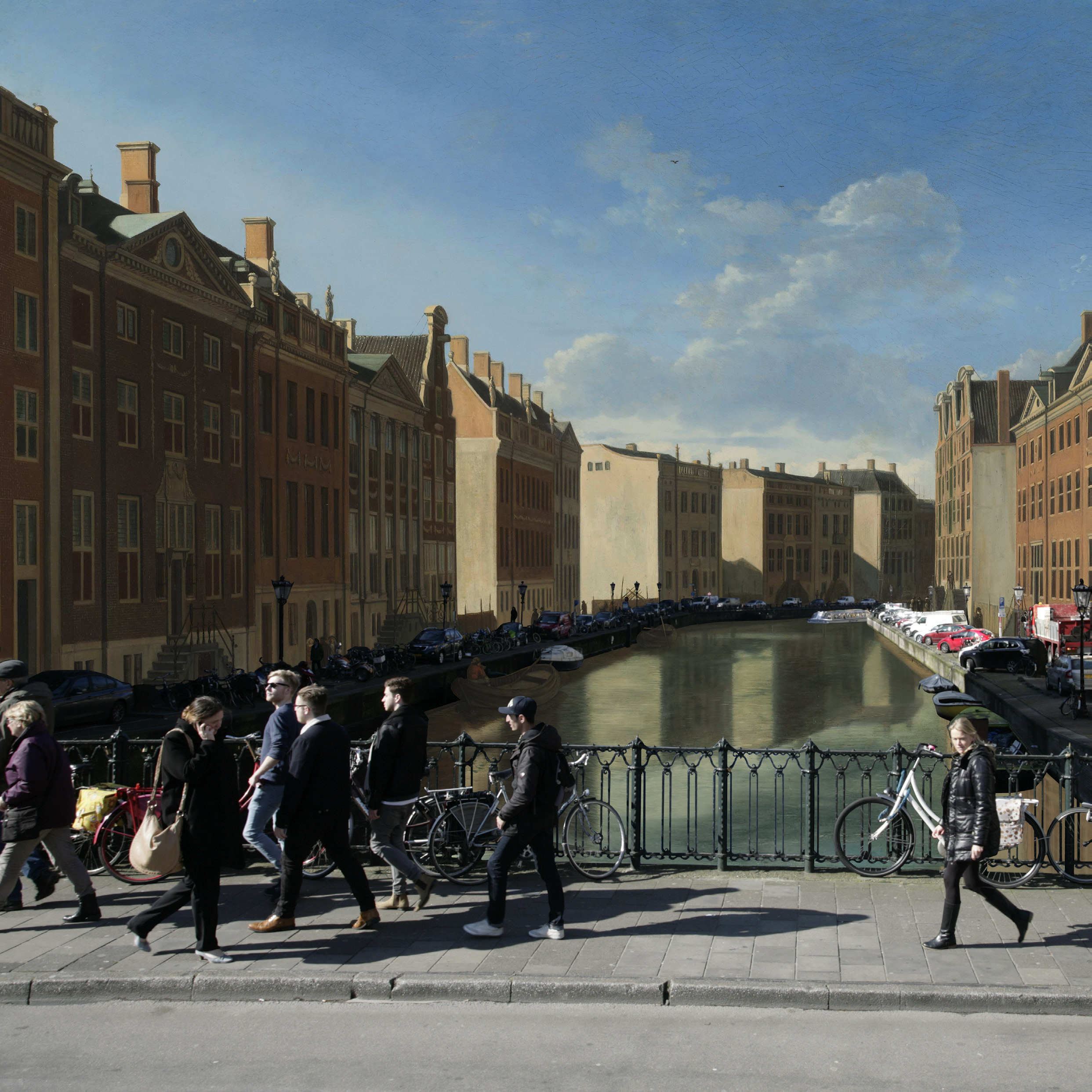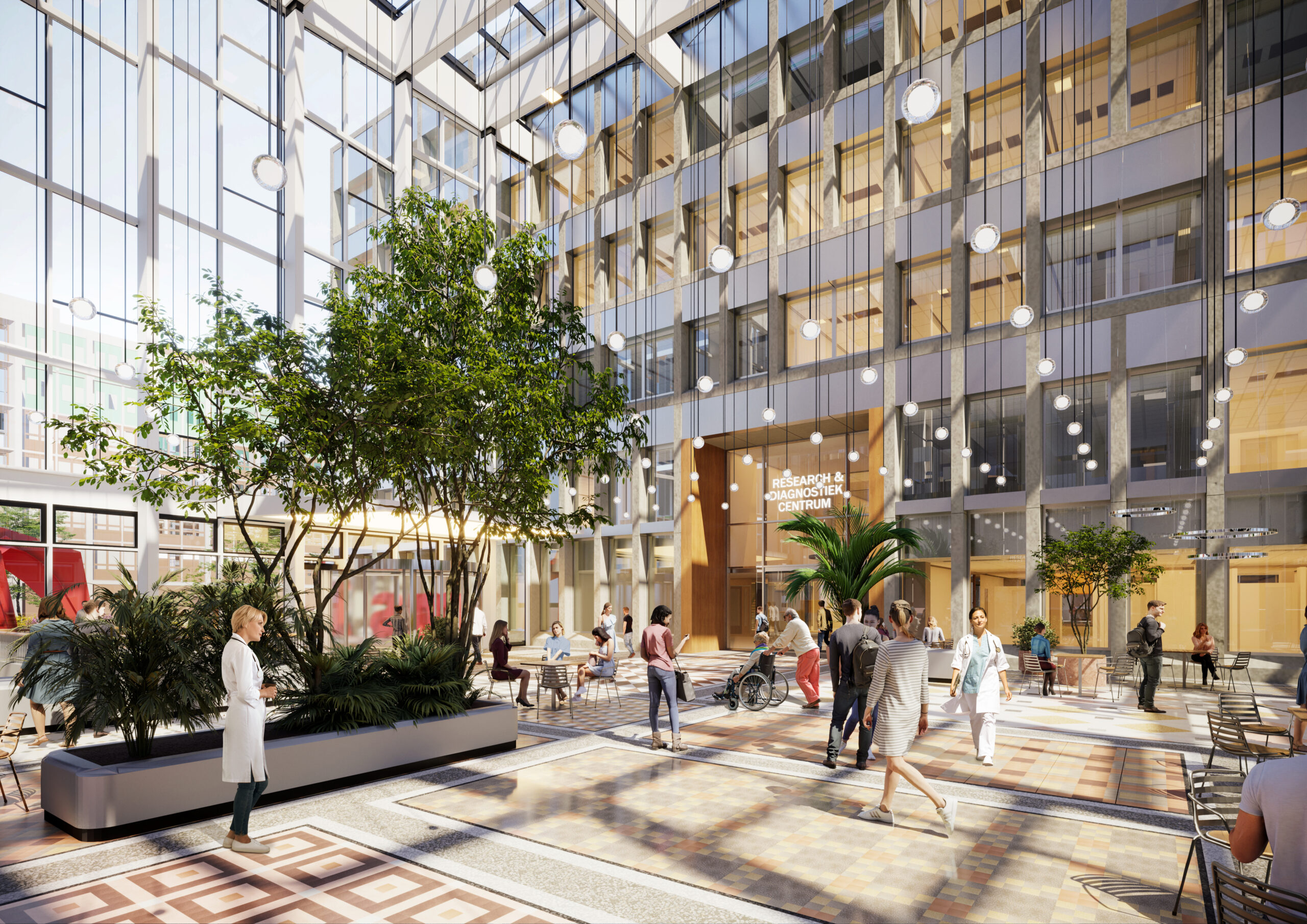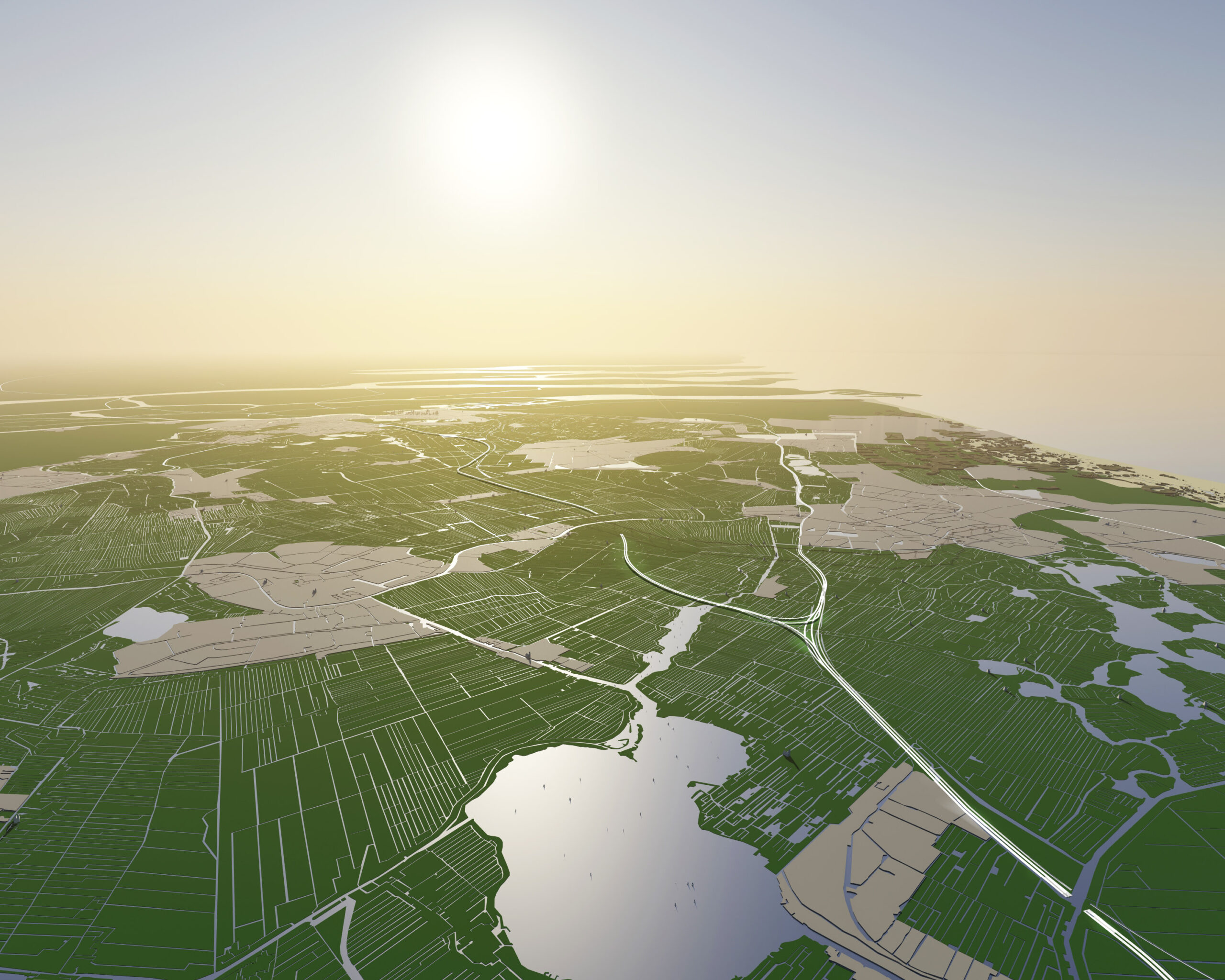The Leiden Bio Science Park stretches from Leiden Central Station to the Oude Rijn in Oegstgeest. A combination of facilities for research, production and education and 4,000 homes were developed from the very beginning in 1984 into a dynamic innovation district. Dynamic, but at the same time radically green. A biodiverse Dutch landscape of willows, water and red clinker roads forms the setting for a urban density and a mix of buildings.
The Leiden Bio Science Park (LBSP) has been set up according to principles of framework planning. Public space intended for roads, water and greenery, and with openings for larger green areas, such as parks and sports grounds, have been outlined. The green-blue framework is including waterways, biodiversity and measures for climate-adaptivity. The green-blue framework provides internal connections, places for meeting and seclusion. At the same time, links with the surrounding urban network are being developed. Connections for bikes and pedestrian, recreational routes and ecology. Two wide green veins link LBSP with the Endegeest estate and Bos van Bosman.
Within the contours of the framework there are ten sub-areas outlined that can be flexibly filled in. For each sub-area, the programming, minimum building density and parking solution have been roughly determined. The implementation takes place on the basis of (market) developments. Three of the ten sub-areas are meant for housing.
The dynamic planning system at the basis of the LBSP Masterplan provides sufficient guidance for integral area development and at the same time the required flexibility to respond to changes. In doing so, the LBSP presents itself as the contemporary equivalent of the historical city. The public space belongs to everyone and has an undeniably long-term handwriting and the buildings are the epitome of individual insights and preferences in their appearance and functionality. Clear building lines, single volumes and striking architecture mean that the buildings also determine the quality and openness of the outdoor space.
With the completion of 3,00,000m2 for businesses and education, more than 2,000 homes and the opening of the renewed Naturalis Biodiversity Center in the past decade, the contours of a lively and multifunctional urban environment have become visible. The campus is transforming from a monofunctional university cluster into a powerful innovation district. The LBSP is a hub for progress where academia and business work together. The community now has over 180 companies and institutions, more than 21,000 employees, 22,500 students and 3000 inhabitants!
Within the urban structure, the elongated shape of the LBSP is a special feature. The innovation district has a length-to-width ratio of 5:1. It fills the space between a number of urban cores in the region, lies in two municipalities (Leiden and Oegstgeest) and cuts through several types of landscapes. The lack of a self-evident center is compensated by multiple focal points. These are all located along a Green Heart Line: a natural middle line for cyclists, pedestrians and public transport that runs through the area from east to west and links LBSP to Leiden Central Station.
The LBSP is the largest life science & health cluster in the Netherlands. Since 2004 Studio Hartzema has been building along as Masterplanner, designer and supervisor. It is our pride to be able to work for a long time on behalf of the municipality of Leiden and Leiden University with all the knowledge that comes with it. The Leiden Bio Science Park, with all its challenges and ever-changing needs, is our flagship and proof that long-term relationships are worthwhile if they lead to a high level of trust and commitment.
